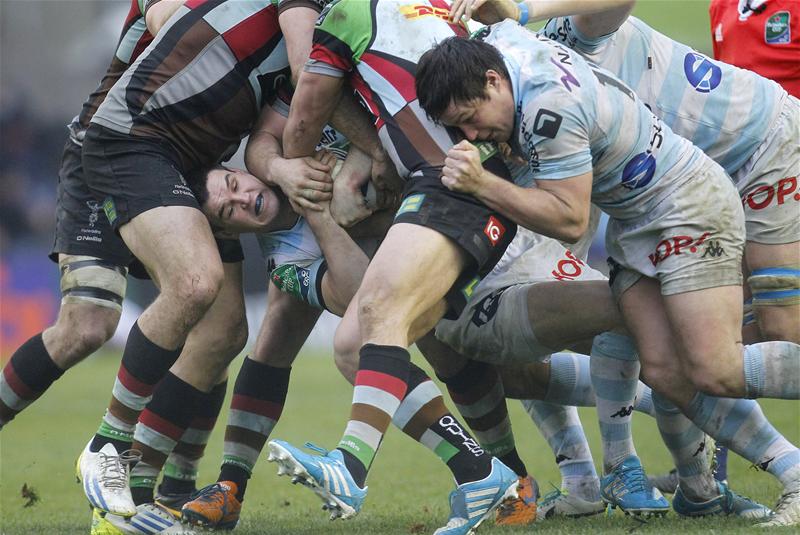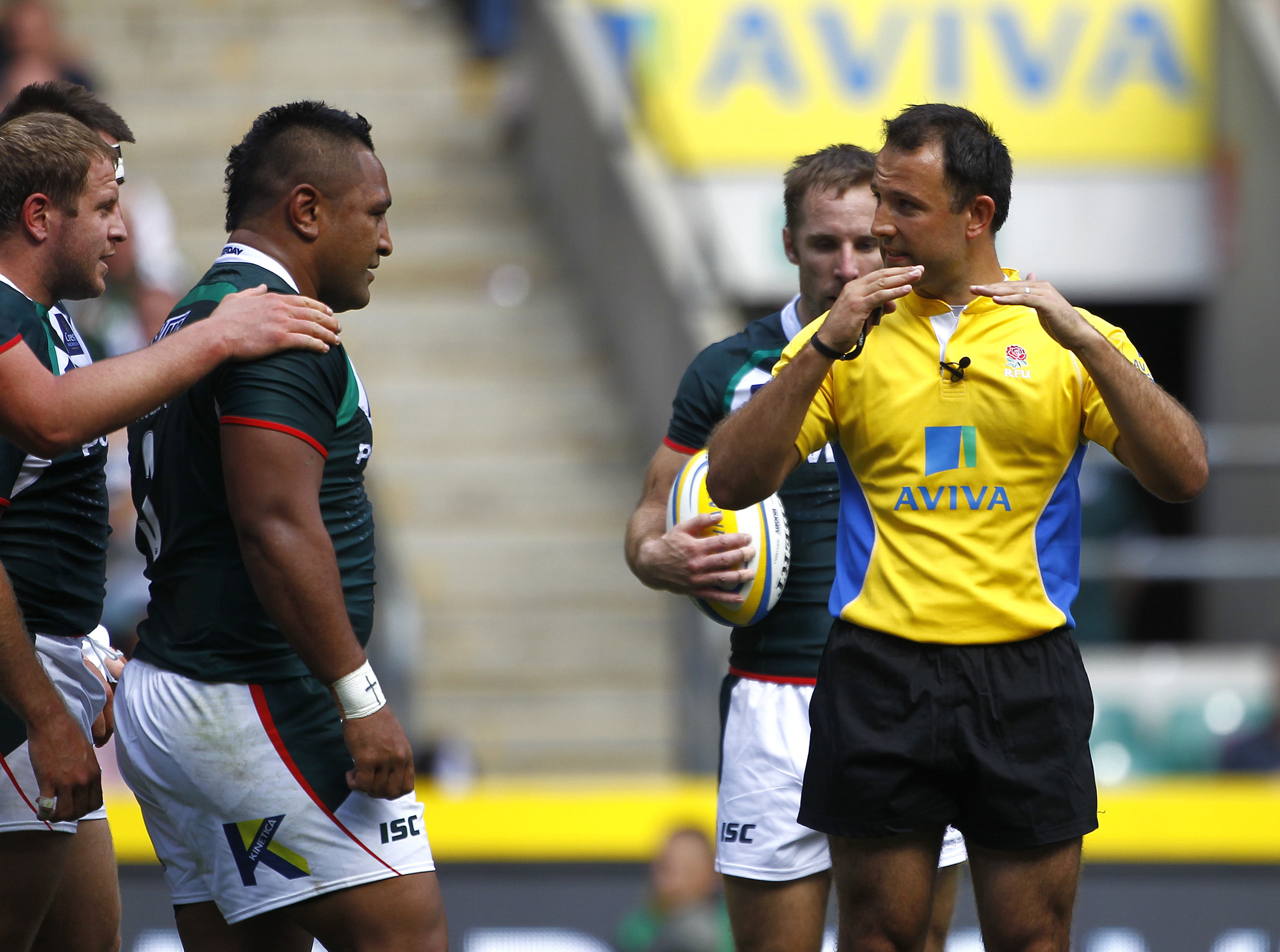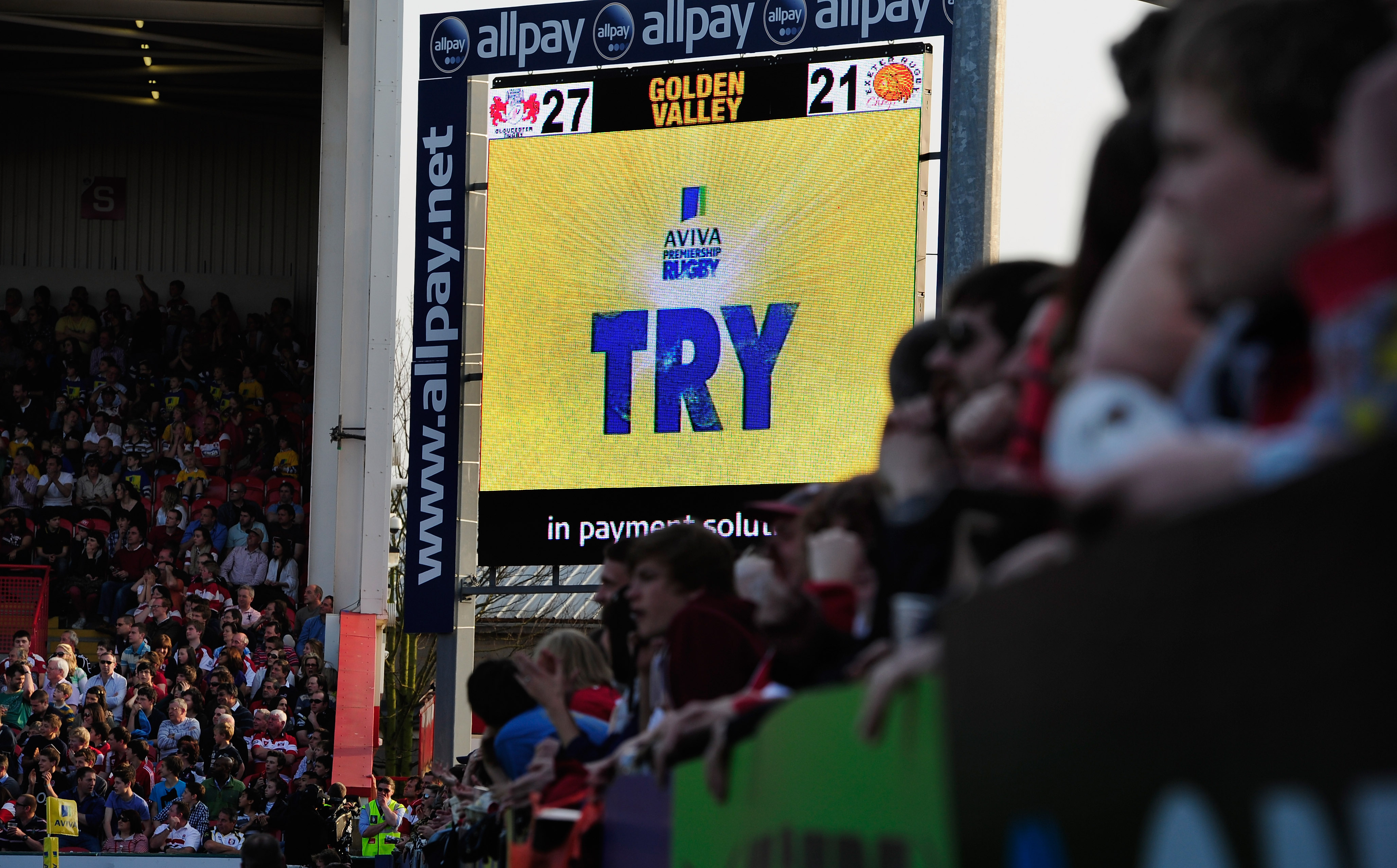There’s no need to rip up the rulebook, but rugby has some creases to iron out before we can arrive at some sort of rugby nirvana…
1. CHOKE TACKLE MADNESS
The choke tackle, in which turnovers are effected by preventing the ball carrier from going to ground, was much admired when Ireland introduced it to union a few years ago. Unfortunately teams have become too good at it. Defenders converge like a shoal of piranha on the carrier, attackers pile in too, and the morass of mauling bodies collapses in an unedifying heap.
There’s little prospect of the ball emerging and so the referee blows for a scrum – put-in to the defending team.
It’s messy, ugly and above all unjust, because the defenders lie where they like and obstruct the ball with impunity. Not that the attack has much time to get the ball back in any case, because referees are blowing up the moment the maul collapses – Dave Attwood is one player who showed his exasperation at this after a powerful Bath drive at Wasps led to the inevitable turnover.
Will Greenwood calls it “the death knell of positivity” and it must be addressed.
Action needed: First, defenders in the way should be required to roll away just like they’re obliged to do at rucks. Second, referees should pause to see if the ball might emerge – not instantly whistle for a scrum.
2. SCRUM PAIN
The optimism generated by the IRB’s 2013 scrum remedies has evaporated. The ‘crouch, bind, set’ engagement, accompanied by strict enforcement of straight put-ins by the scrum-half, was meant to make scrums quicker and easier.
In fact, after encouraging signs initially, we seem to be back to where we were. Or as NZ-based writer Gregor Paul puts it: “Scrums have become the untreatable boil on the face of the prom queen.”
The scrums in last week’s Gloucester-Brive game were diabolical, while Stuart Barnes called the Racing Metro-Northampton match a “shambolic scrum fest”.
As instructed, referees are waiting for the scrum to be stable before allowing the ball to go in, but sometimes the delay is simply too long. No wonder Dylan Hartley fainted from the pressure recently! Or Tomas Cubelli got bored and put the ball in without waiting for Glen Jackson’s say-so in the Australia-Pumas Test on the Gold Coast.
The put-in remains a mockery. Crooked feeds, even extreme ones, are still being permitted, which means hookers don’t need to hook and scrums become a straight shoving contest. Well done Wayne Barnes for penalising two in last Sunday’s Toulouse-Montpellier game. But what about the rest?
Action needed: Referees must enforce straight feeds, thus forcing hookers to heel the ball and the team in possession to lock out. The result will be a true scrum contest and cleaner ball. And get that ball in quicker!
3. TIME WASTING
Let’s stay with the scrum a minute. Is it right that all the set-piece shenanigans, when nothing really happens, should be eating into those 80 minutes? Of course it’s not.
When Argentina were beating Australia in Buenos Aires this month, I kept my eye on the clock. Nigel Owens blew for a knock-on by Nicolas Sanchez at 43:54 and the ball went in at the subsequent scrum at 44:54.
Later on the same thing happened after a Puma knock-on in midfield – the scrum was called at 48:52 and the ball went in at 49:52. One minute to make the ball live again! Why? Because the ref was talking to players and no one was in any rush.
At the end of the game, the clock was 77:10 when Owens blew for a scrum and had moved to 79:38 by the time we had an outcome (Argentina penalty), resets being partly responsible.
And while we’re at it, can you remember the 17 minutes of scrums in this year’s Bath-Sale game at the Rec? Admittedly not all of it performed at a laboriously slow pace.
But still, 17 minutes…
Action needed: Simple – if the first scrum isn’t completed properly, stop the clock and only restart it when there’s a decisive outcome (the ball comes out or one side is penalised).
4. TMO MUDDLE
Last season’s shambolic Television Match Official (TMO) protocol has continued. You have decisions altered because the crowd see a replay and boo. You have injustices – like Leonardo Senatore’s disallowed charge-down try v New Zealand – going uncorrected despite the TMO being allowed to intervene.
You have refs who use it far too readily and refs who don’t use it when they should – what about Imanol Harinordoquy’s try-scoring forward pass last Sunday? Many refs tell the TMO what they think and dare the TMO to defy him – unsurprisingly they seldom do. A rare exception was TMO Geoff Warren contradicting Luke Pearce, who called an Alex Corbisiero act a “punch” whereas we could all see it wasn’t.
Okay, the system will never be perfect. But one thing must change and that’s the use of the question asked after a potential try is scored.
Too many refs are saying “try, yes or no?” and putting the onus on the TMO to find evidence of a touchdown – even though defences nowadays are well versed in throwing themselves in the way to block camera angles.
When Sale thundered a maul over Northampton’s line at Franklin’s Gardens, it was right to assume they had scored a try. Andrew Small should have asked, “Any reason why I cannot award the try?”. Instead, he asked the wrong question and Alberto de Marchi’s try, in the absence of irrefutable proof, was disallowed.
Australia’s Tevita Kuridrani was denied a try in similar circumstances against the Pumas.
Both scores would have been given in the amateur days and they should be now.
Action needed: A jury can find a defendant guilty “beyond reasonable doubt”, so let’s see that principle applied to the rugby field. If the attack has crashed over the line, allow the try to stand unless evidence is found to the contrary.
5. POINTS OF CONFLICT
I’m not quite finished with the scrum. We all know referees don’t really understand what’s going on in the front row, they just have a better idea than the rest of us.
It’s a tough job, particularly as the scrum laws seem to change every year. Currently, refs are looking at looseheads more closely so are penalising them more. But if the tighthead drives in onto the hooker then the loosehead has to follow him, otherwise his hooker will be exposed.
Steve Hansen has said that refs resort to “guessing” and he could cite the 2009 Italy-NZ match as a prime exhibit. A review of the tape suggested that the Italian tightheads, Martin Castrogiovanni and Salvatore Perugini, were boring in on Wayne Crockett and should have been repeatedly penalised. Ref Stuart Dickinson saw it differently.
And that’s the problem. It’s a subjective view on a technicality of the game that can have a huge bearing on the outcome. So is it right that offenders incur a three-point sanction? “Oops, lost my bind there for a moment.” 3-0.
I’m with Justin Marshall on this one, even if you always smell a rat when it comes to suggested law changes from the Kiwis. “The laws are so cloudy and shrouded in technical-speak,” says the former All Black, “that there’s a real case for dropping the value of straight-arm scrum penalties to two points.”
And it might be worth doing the same for lineout interference, because some of the calls there are marginal in the extreme.
Action needed: Some offences are worse than others, so why not allocate different points values. For technical set-piece offences, bring back the two-point penalty (like it was before 1891)!










